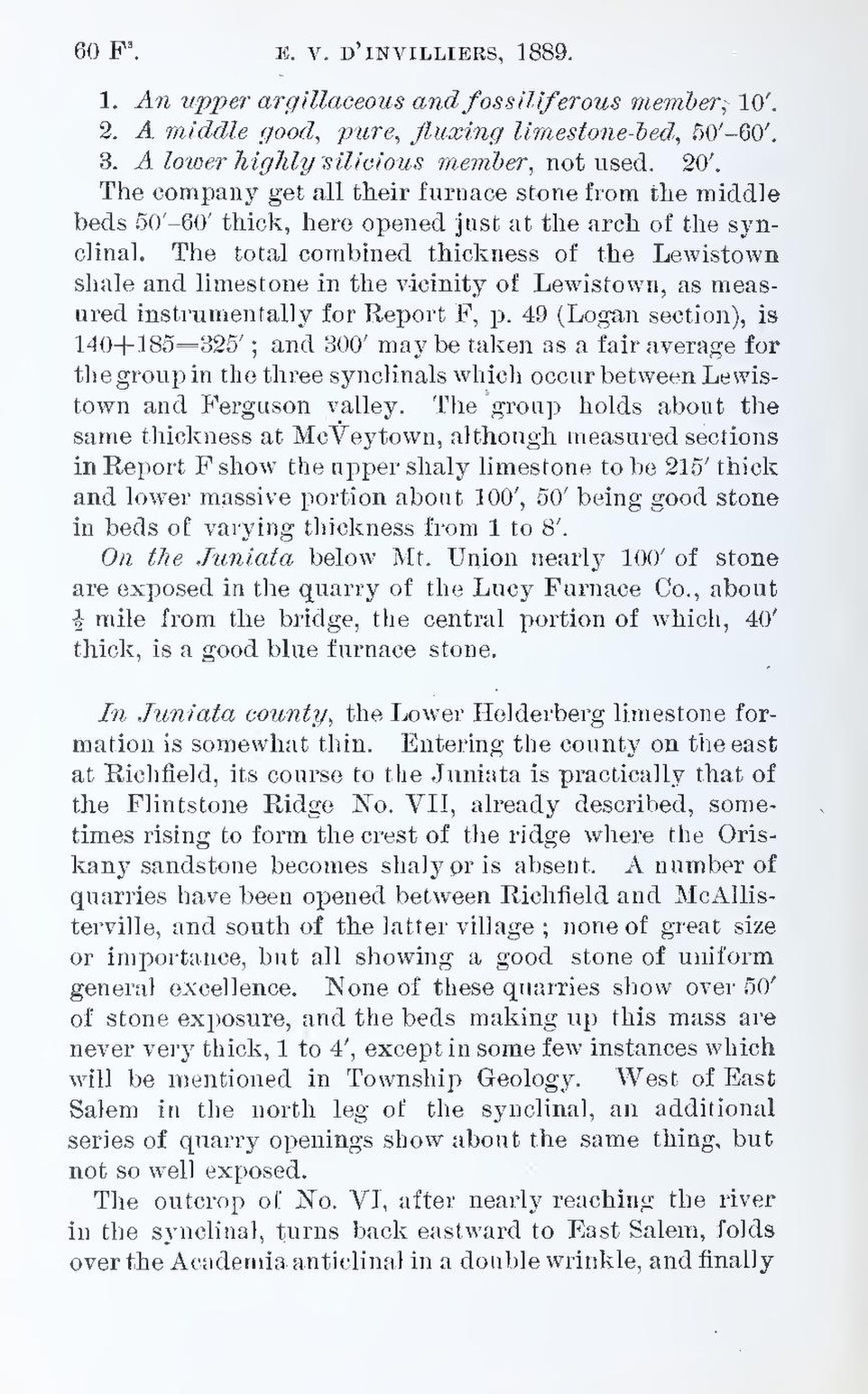1. An upper argillaceous and fossiliferous member, 10′.
2. A middle good, pure, fluxing limestone-bed, 50′–60′.
3. A lower highly silicious member, not used. 20′.
The company get all their furnace stone from the middle beds 50–60′ thick, here opened just at the arch of the synclinal. The total combined thickness of the Lewistown shale and limestone in the vicinity of Lewistown, as measured instrumentally for Report F, p. 49 (Logan section), is 140+185=325′; and 300′ may be taken as a fair average for the group in the three synclinals which occur between Lewistown and Ferguson valley. The group holds about the same thickness at MeVeytown, although measured sections in Report F show the upper shaly limestone to be 215′ thick and lower massive portion about 100′, 50′ being good stone in beds of varying thickness from 1 to 8′.
On the Juniata below Mt. Union nearly 100′ of stone are exposed in the quarry of the Lucy Furnace Co., about ½ mile from the bridge, the central portion of which, 40′ thick, is a good blue furnace stone.
In Juniata county, the Lower Helderberg limestone formation is somewhat thin. Entering the county on the east at Richfield, its course to the Juniata is practically that of the Flintstone Ridge No. VII, already described, sometimes rising to form the crest of the ridge where the Oriskany sandstone becomes shaly or is absent. A number of quarries have been opened between Richfield and MeAllisterville, and south of the latter village; none of great size or importance, but all showing a good stone of uniform general excellence. None of these quarries show over 50′ of stone exposure, and the beds making up this mass are never very thick, 1 to 4′, except in some few instances which will be mentioned in Township Geology. West of East Salem in the north leg of the synclinal, an additional series of quarry openings show about the same thing, but not so well exposed.
The outcrop of No. VI, after nearly reaching the river in the synclinal, turns back eastward to East Salem, folds over the Academia anticlinal in a double wrinkle, and finally
